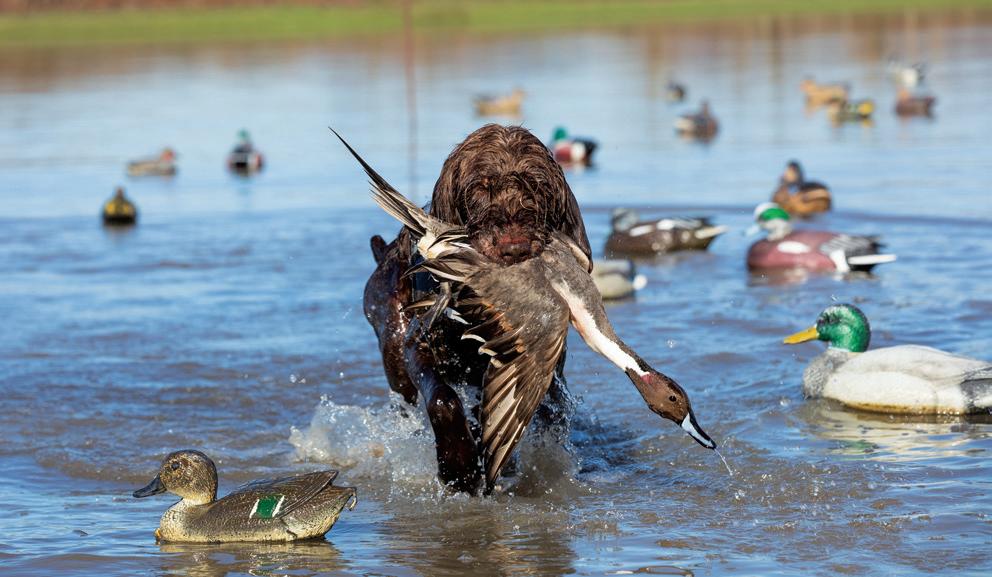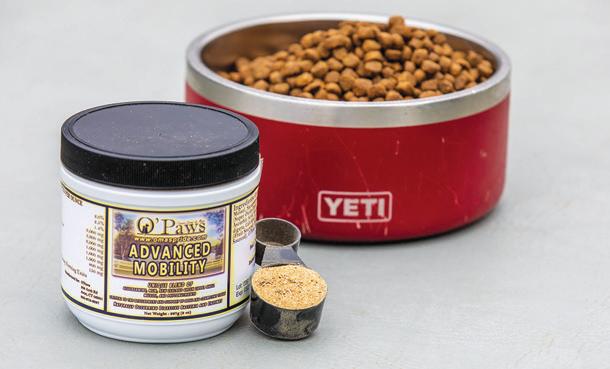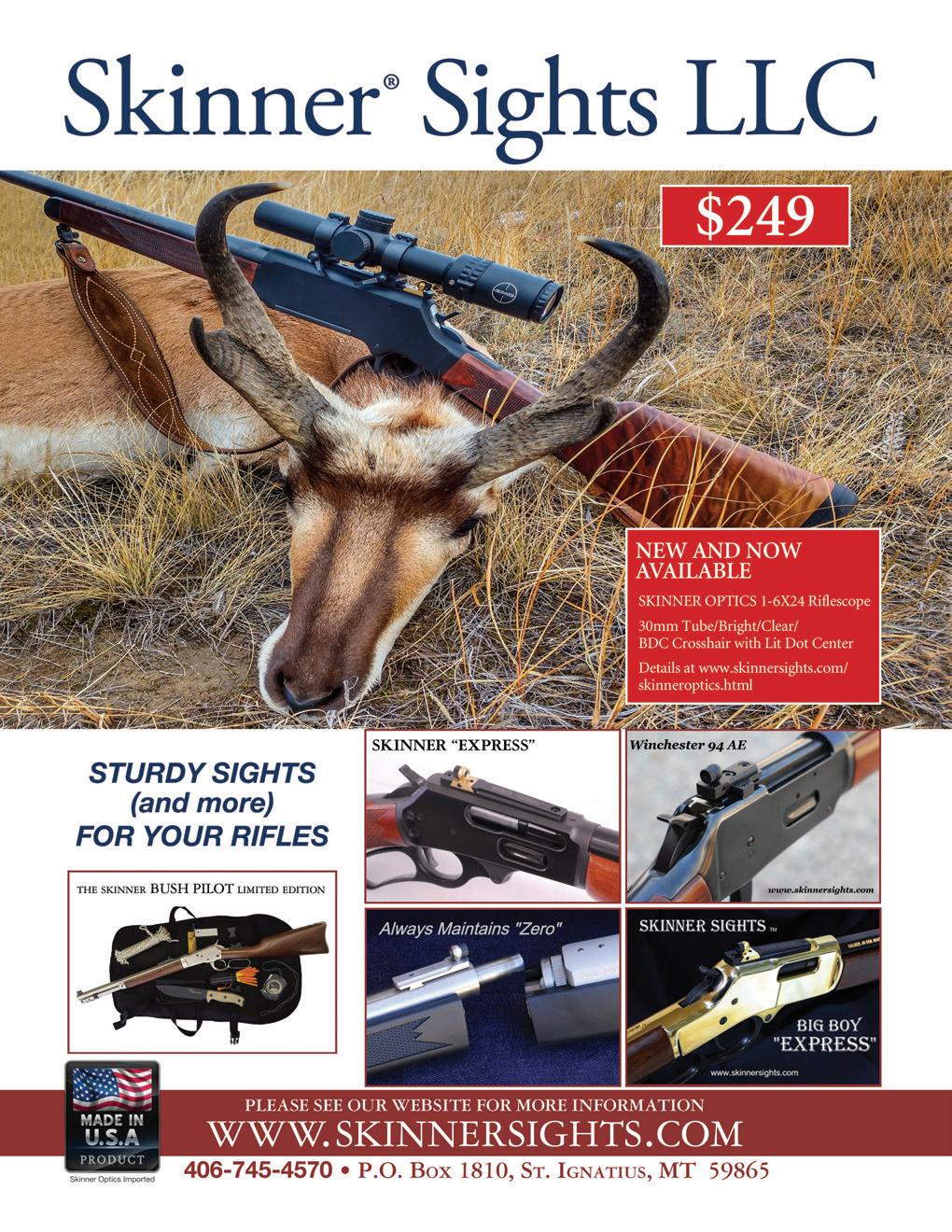
5 minute read
Eastern Sierra fisheries this month Haugen on hunting dogs
With bird seasons largely wrapped up, now is the time to reflect on what worked – and more importantly, what didn’t. That way you’ll be better prepared to serve the needs of your gun dog and keep it comfortable and healthy on future hunts. (SCOTT HAUGEN)
SEASONAL REFLECTIONS
By Scott Haugen
As I write these words, it’s a bittersweet time. Not because of all that’s going on in the world, but because January has passed. Not only has the first month of the new year come and gone, but so too has duck season, along with chukar, Hun, quail, grouse, snipe, crow and fall turkey seasons.
At the end of every bird hunt I like to reflect on what went right for the day, but especially what went wrong. I’m not much for dwelling on success; rather, I spend more time evaluating faults and mistakes in order to become better at what I’m doing. It’s no different when hunting with my dogs.
ECHO, KONA AND I went on more bird hunts this past season than ever, and I learned a lot along the way. I reaffirmed that dogs are far better hunters than humans will ever be, that they mark more ducks and geese than we do, that they know what we’re going to do before we even make a move, and that they have noses so incredibly powerful, we’d be hating life if we took in all the miserable smells of the world the way canines can.
I also learned that by being prepared in the field, I can ensure my dog’s safety and comfort. In last month’s column I wrote how I made a couple mistakes this past duck season by not covering up steel posts that secured my blind, and failing to cut heavy-stalked brush close to the ground, both of which my dogs suffered for.
I reaffirmed the importance of keeping a knife handy on duck hunts, too. I only used it once, but it was a necessity, as Kona got his foot so tangled in my jerk cord when chasing a duck, I had to cut him free. Again, it was my fault for not lifting the cord out of the water in the first place, but it could have been ugly had I not had a knife.
I also learned to check the contact points of my e-collars to make sure they don’t come loose; yes, I lost one at the start of a two-day hunt. I don’t like shouting commands at my dogs while hunting, relying instead on beeps and hand signals to direct them. There are a few times a year I might have to give them a quick, low-power zap – usually to prevent them from getting in a tangle with a skunk or porcupine, or keep them from going where they shouldn’t – and both posts must be secured for this to happen. Check them at the start and close of each hunt, and have an extra in your pack, just in case.
As waterfowl season progressed, ice and snow descended upon us. Toss in temperatures in the 20-degree range, along with 30 mph winds, and things can get cold for the dogs. To protect them from the elements, I built a wind-block of heavy wire and thick brush. Rarely do my dogs hunt from inside a blind, as I want them to have a 360-degree view; as I said, they spot more birds than I do.

FOLLOWING UPLAND HUNTS, where my
dogs cover three times the miles that I do, my 7-year-old female started getting noticeably stiff, especially on cold days. I began giving her O’Paws Advanced Mobility supplement, and it made a world of difference.
Used as a food topper, I give her one tablespoon of it the night before the hunt, another following the hunt – usually late morning – and another at dinner; I don’t feed my dogs the morning of a hunt.
This season I also reaffirmed the value of dog vests that fit. As the season progresses, your dog will become a lean machine, and keeping vests functional is vital to their comfort and performance. Kona, my male pudelpointer, trimmed down and his vest started rubbing inside his front legs. I eventually custom-cut the neoprene vest for him and it made a world of difference.
When hunting fall turkeys and valley quail this winter, my dogs spent a lot of time in briar patches. One of these hunts I removed their vests and made sure their e-collars fit snugly, which greatly eliminates hangups in the brush.
We had a wet winter and spent a lot of time in water, and one of my dogs had constant ear inflammation I couldn’t get a handle on. Then I started using Thornit, a canker powder made in the United Kingdom. After just one treatment the difference was amazing, and my dog felt much better. After a second treatment, he was 100 percent healed.
Haugen and Kona pose with a January turkey that the 4-year-old pudelpointer tracked, pointed and retrieved. On this hunt, Kona’s vest was removed and his collar tightened for safe, easy movement through thick briars. (SCOTT HAUGEN) Author Scott Haugen noticed impressive relief in his dogs’ mobility and comfort after being given O’Paws Advanced Mobility blend as a food topper before and after physically demanding, coldweather hunts. (SCOTT HAUGEN)

WITH SEASONS BEHIND us, now is
the time to reflect on the types of adventures you and your dog embark upon, as well as the demands you place on them. As their master, you owe it to your dog to meticulously monitor their health, for only then will you ensure their comfort, performance and safety. CS
Editor’s note: To watch Scott Haugen’s series of puppy training videos, visit scotthaugen.com. Follow Scott on Instagram and Facebook.










